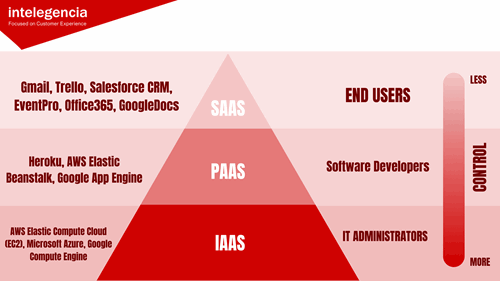A Beginner’s Guide to Cloud Computing
 Deepak Sharma
June 10, 2020
Deepak Sharma
June 10, 2020
On average, how often do you hop online to send emails, stream movies, or listen to music? We have cloud computing to thank for the entertainment we have for leisure days, among many others. About 95 percent of people use cloud computing without knowing it. Online storage is just the beginning of the many ways it offers convenience and accessibility to its users.
In the business setting, cloud computing created a significant shift from traditional IT resources. Having rooms filled with servers and company resources isn’t only expensive, but also unsustainable. Rather than acquiring infrastructure, organizations can opt to rent storage through cloud computing.
What is Cloud Computing?
Cloud computing is the delivery of services over the internet, including storage, software, and databases. Typically, business leaders pay for cloud services to significantly reduce cost, efficiently run infrastructure, and continuously scale as the business grows.
Some cloud computing examples include:
- Access applications like DropBox and Gmail through your browser without installing them on your computer
- Store photos, captions, and videos on your social media pages like Facebook and Twitter without site crashes
How does Cloud Computing work?
Traditionally, businesses invested heavily in on-premises infrastructure or downloadable applications. Modern-day enterprises do the opposite.
Cloud infrastructure is gaining popularity thanks to its innovative way of offering the same quality of services as its traditional counterpart – but with less cost and maintenance requirements. Organizations now only need to pay for their consumption to enjoy easy access to cloud services and new technologies.
The pros of Cloud Computing application development
It’s rare to see big companies explore new digital opportunities that are far from traditional business setups. However, there are a few good reasons leaders are taking the risk and investing in Cloud Computing.
- Saves on cost
Like many tech innovations, one of the top benefits of Cloud Computing is that it can cut down on capital expense. There’s no longer a need to purchase hardware nor spend time and money on setup – and this includes the resources dropped on server racks, electricity, and even IT experts.
- Boosts productivity
A bulk of your IT team’s time is typically spent on setting up systems and making sure everything works. It may seem like a simple task, but on-site datacenters demand more attention and effort – making it almost impossible for your team to work on anything else. With Cloud Computing, the team can focus on other important business processes and targets.
- Accessible and flexible
Cloud computing is an access-anywhere type of service. Your organization can access it on demand within minutes from anywhere (and with a few clicks). The convenient availability of the service allows businesses to be flexible in terms of uploading and downloading critical data.
- Secure
Confidential and sensitive data are usually what lies inside a company's servers. Almost every cloud provider offers impressive security backed by policies and controls to keep businesses on top of their data and infrastructure.
- Promotes scalability
Because cloud computing doesn’t require hardware, businesses can easily scale and access the resources they need at any time and from any location. Those include storage, bandwidth, and computing power.

Three types of Cloud Computing Services with examples, users, and levels of control
What are the three types of Cloud Computing services?
The Cloud is almost everywhere in today’s digital landscape, but what makes up the technology? It can be broken down into three widely adopted types: Infrastructure-as-a-Service (IaaS), Platform-as-a-Service (PaaS), and Software-as-a-Service (SaaS).
Infrastructure-as-a-Service (IaaS)
IaaS is a model where external providers offer virtual infrastructure to business organizations. Companies outsource various services, such as storage, servers, or network, connected to the internet. These services are developed by third-party providers and are ready for use once delivered to the companies.
The known tech giants that offer SaaS are Amazon EC2, Microsoft Azure, and Google Cloud.
Platform-as-a-Service (PaaS)
Where IaaS products are built and managed by external providers, PaaS is for cloud application development. PaaS frameworks and components allow businesses to create and design customized applications – built on top of IaaS. The main difference is that PaaS focuses on app development, unlike IaaS, that center’s infrastructure.
Some of the key players offering PaaS are Google App Engine, Bluemix, and CloudBees.
Software-as-a-Service (SaaS)
Also called “Cloud Application Services,” SaaS incorporates both IaaS and SaaS in a pay-per-use model. With this type of cloud computing, companies can easily use and access applications online without using infrastructure or creating their software. SaaS utilizes the internet to deliver third-party managed applications.
Most SaaS products run directly through the web browser, so you don’t need to download or install the applications to your device. Popular SaaS examples are Microsoft Office, Adobe Creative Cloud, and Oracle RCM.
Deepak Sharma is a Sr. Business Analyst at Intelegencia. Learning about different Domains and interaction with people from different verticals keeps his life busy and fun at the same time. Else, Sports and Interactive debates over various topics is what interests him the most.
Comment(s)
_BlogComment.Message
